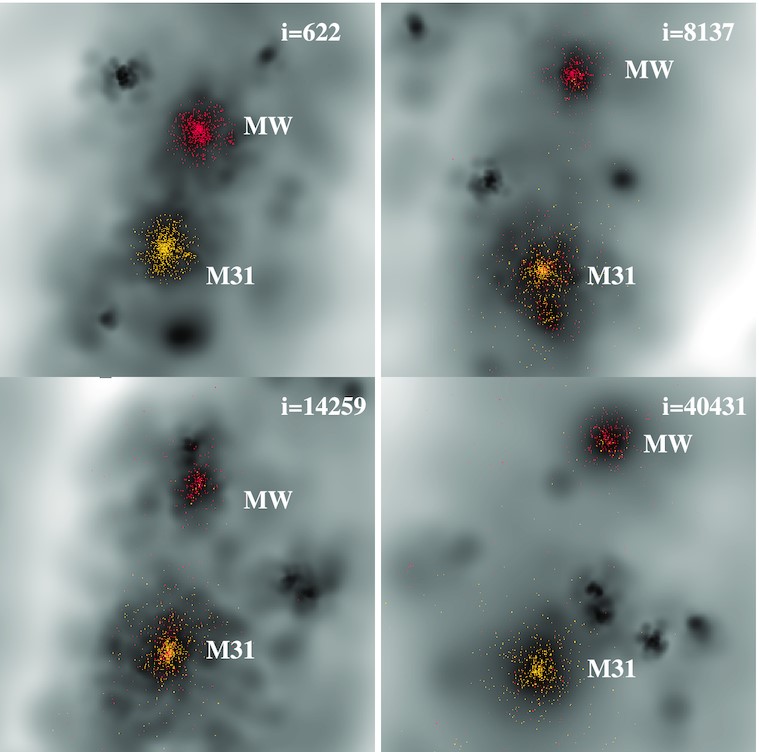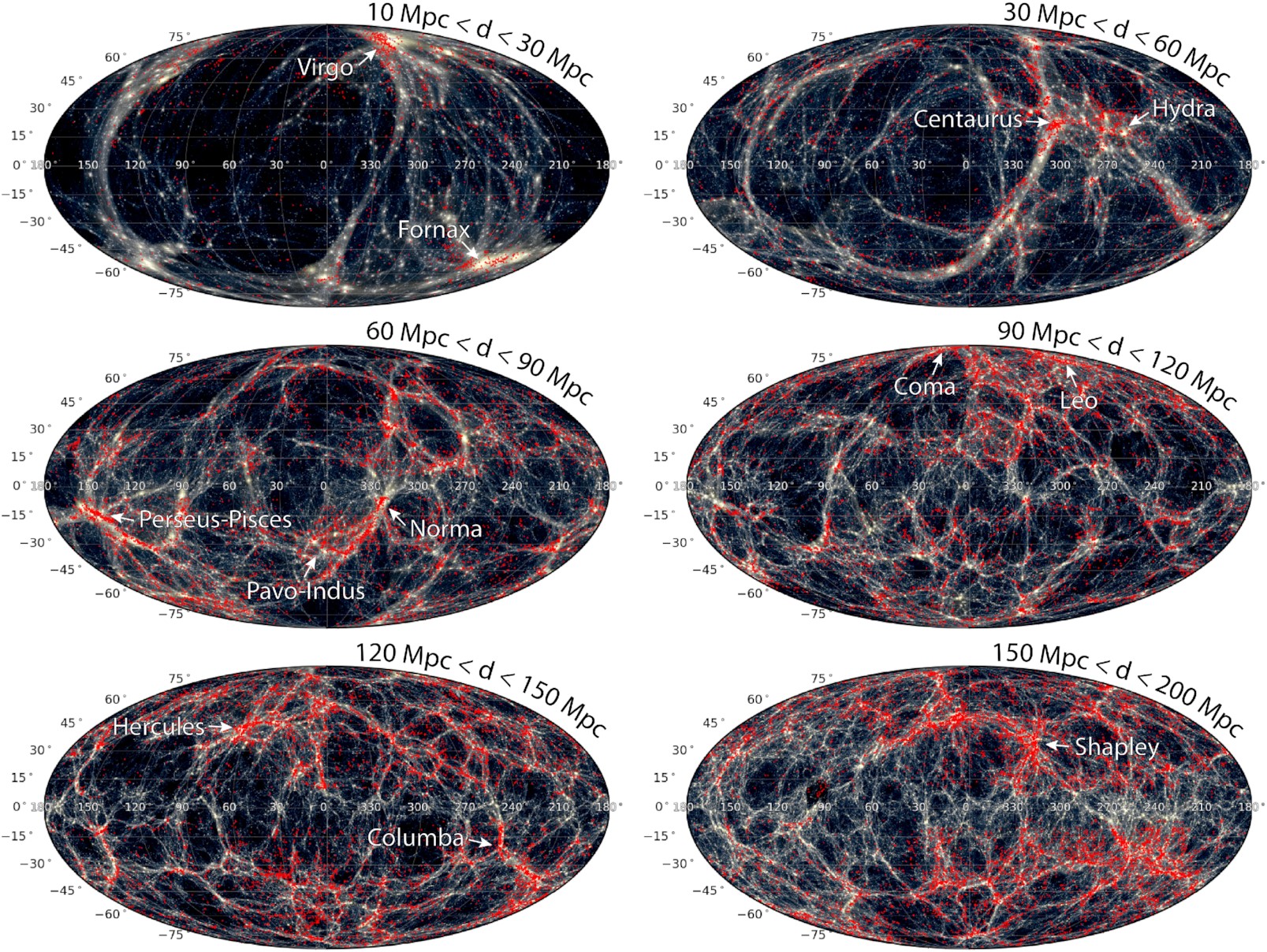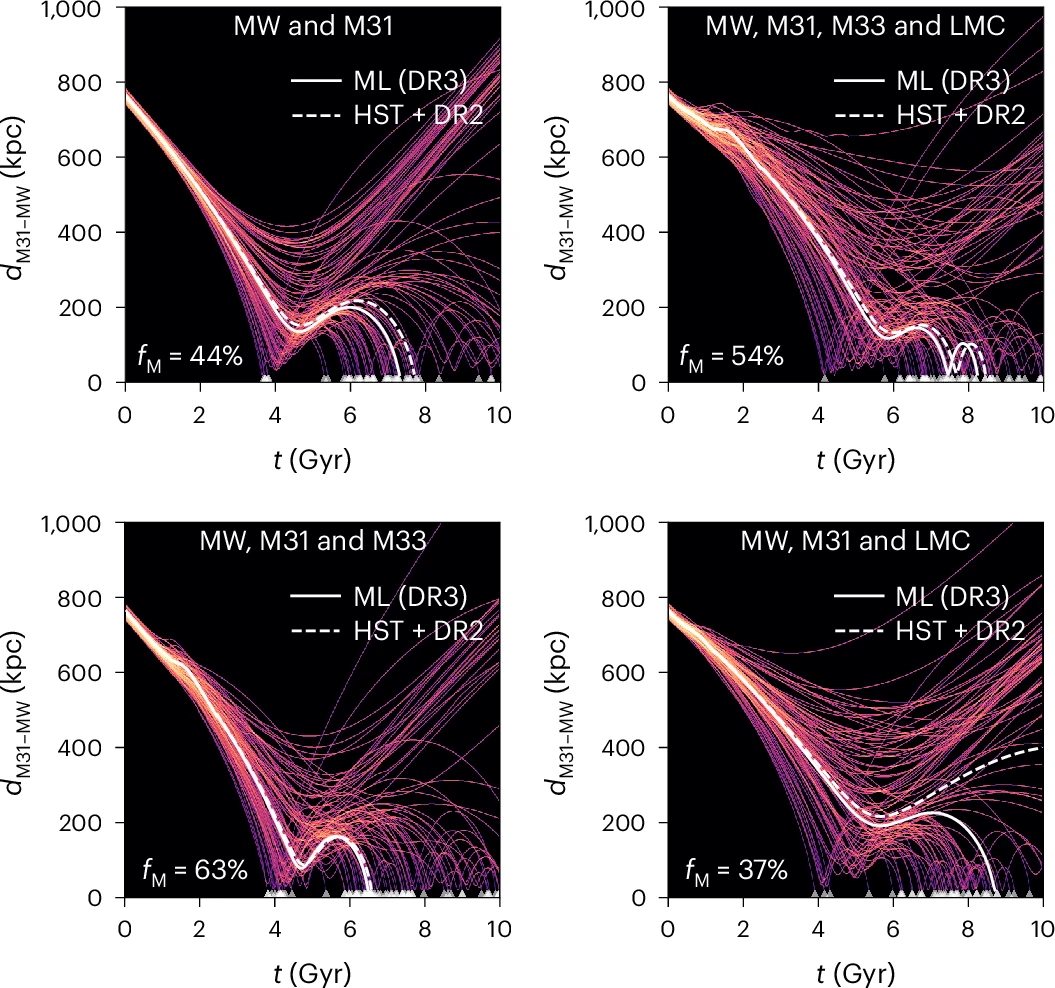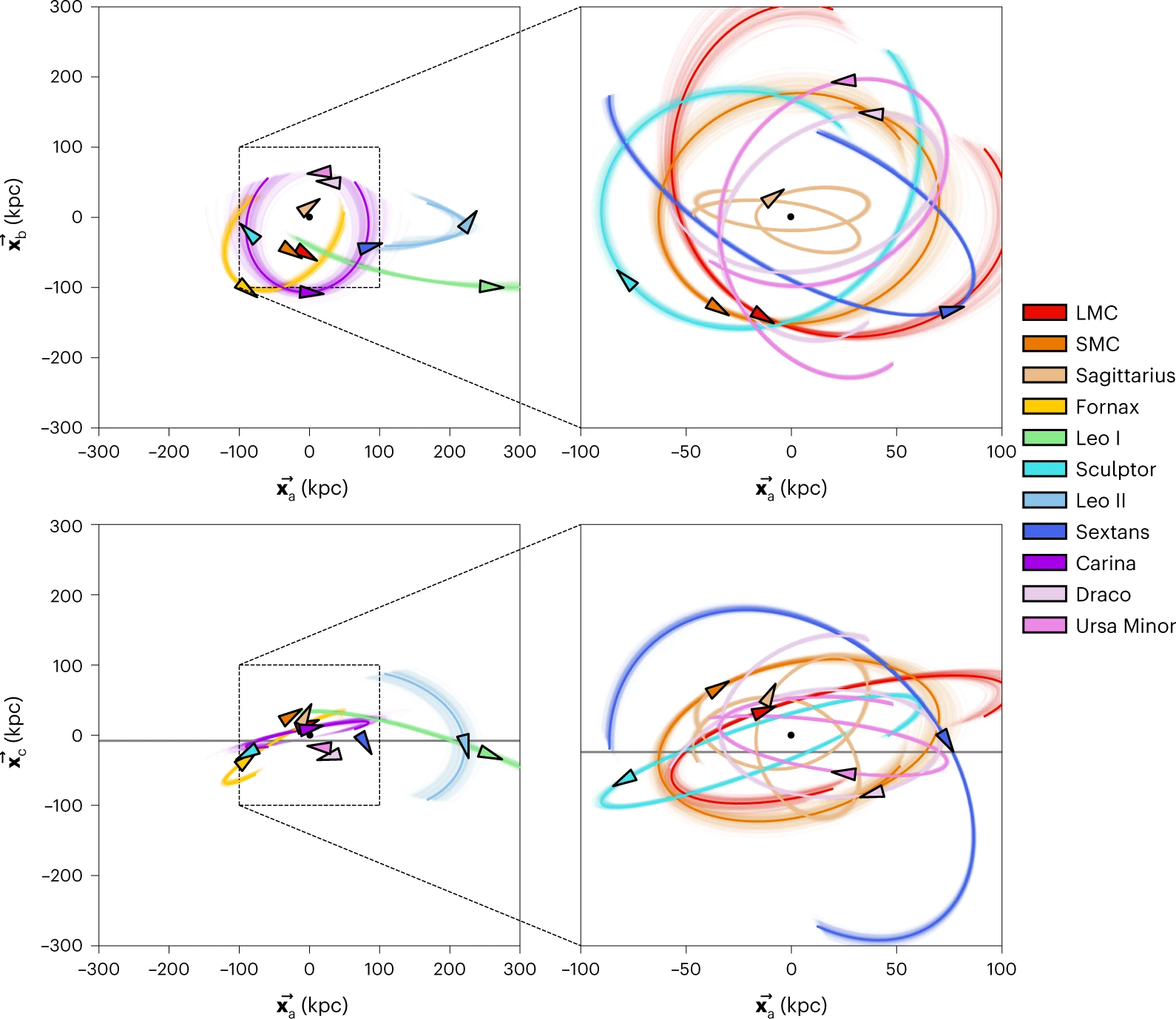Sibelius Overview
In the “Simulations Beyond The Local Universe” (SIBELIUS) project the aim is to connect the Local Group of galaxies to its true cosmic environment. This is achieved by performing constrained local universe simulations for which the phase information has been obtained using the BORG algorithm (Bayesian Origin Reconstruction from Galaxies).
The SIBELIUS project is funded by the Academy of Finland via grants no. 354905, 335607, 314238 and 311049.

The SIBELIUS project thus connects the Local Group to its environment using a large set of constrained cosmological zoom-in simulations. Read more: The SIBELIUS Project: E Pluribus Unum.

In addition we have also run a simulation named SIBELIUS-DARK, which is the largest and most comprehensive ‘constrained realisation’ simulation to date. It covers a volume up to a distance 600 million lightyears from Earth and is represented by over 130 billion simulated ‘dark matter particles’, requiring many thousands of computers working in tandem over several weeks and producing over 1 Petabyte of data. It was performed on the DiRAC COSmology MAchine (COSMA) operated by the Institute for Computational Cosmology of Durham University. Read more on the Sibelius Dark website and in the research paper SIBELIUS-DARK: a galaxy catalogue of the local volume from a constrained realization simulation.

Selected Research Papers
- Setting the stage: structures from Gaussian random fields
- The SIBELIUS Project: E Pluribus Unum
- SIBELIUS-DARK: a galaxy catalogue of the local volume from a constrained realization simulation
- The Local Group’s mass: probably no more than the sum of its parts
- The timeless timing argument and the total mass of the local group
- Distinct distributions of elliptical and disk galaxies across the Local Supercluster as a ΛCDM prediction
- The emperor’s new arc: gigaparsec patterns abound in a ΛCDM universe
The uncertain future of the Milky Way-Andromeda collision
It is commonly believed that our own Milky Way is on a collision course with the neighbouring Andromeda galaxy. As a result of their merger, predicted in around 5 billion years, the two large spiral galaxies that define the present Local Group would form a new elliptical galaxy. In this paper we consider the latest and most accurate observations by the Gaia and Hubble space telescopes, along with recent consensus mass estimates, to derive possible future scenarios and identify the main sources of uncertainty in the evolution of the Local Group over the next 10 billion years. We found that the next most massive Local Group member galaxies—namely, M33 and the Large Magellanic Cloud—distinctly and radically affect the Milky Way-Andromeda orbit. Although including M33 increases the merger probability, the orbit of the Large Magellanic Cloud runs perpendicular to the Milky Way-Andromeda orbit and makes their merger less probable. In the full system, we found that uncertainties in the present positions, motions and masses of all galaxies leave room for drastically different outcomes and a probability of close to 50% that there will be no Milky Way-Andromeda merger during the next 10 billion years. Based on the best available data, the fate of our Galaxy is still completely open
Read more: No certainty of a Milky Way-Andromeda collision.

The Milky Way plane of satellites
The Milky Way is surrounded by 11 classical satellite galaxies in a remarkable configuration: a thin plane that is possibly rotationally supported. Such a structure is thought to be highly unlikely to arise in the standard (ΛCDM) cosmological model (Λ cold dark matter model, where Λ is the cosmological constant). This is the so-called `plane of satellites problem’, which challenges not only the ΛCDM model but the entire concept of dark matter. In a recent Nature Astronomy paper we show that the reportedly exceptional anisotropy of the Milky Way satellites can be explained, in large part, by their lopsided radial distribution combined with the temporary conjunction of the two most distant satellites, Leo I and Leo II. Using Gaia proper motions, we show that the orbital pole alignment is much more common than previously reported, and reveal the plane of satellites to be transient rather than rotationally supported. Comparing with new simulations, where such short-lived planes are common, we find the Milky Way satellites to be compatible with standard model expectations.
Read more: The Milky Way’s plane of satellites is consistent with ΛCDM.

The Formation of the Local Group of Galaxies
We study the Local Group (LG) of galaxies using numerical simulations, as it provides us with a unique window into the Universe. In the Local Group we can observe the faintest galaxies, which enable us to study the nature of dark matter. In particular, the abundance, anisotropy and inner structure of LG galaxies have all been considered challenges to the prevailing Lambda cold dark matter paradigm. While recent advanced in cosmological hydrodynamical simulations indicate that baryonic effects may resolve some of these issues, other questions remain, such as the peculiar orbits and alignments of dwarf galaxies within the Local Group.

Selected Research Papers
- Structure formation with two periods of inflation: beyond PLaIn ΛCDM
- The core-cusp problem: a matter of perspective
- Properties of Local Group galaxies in hydrodynamical simulations of sterile neutrino dark matter cosmologies
- Tidal stripping and the structure of dwarf galaxies in the Local Group
- Shaken and stirred: the Milky Way’s dark substructures
- The properties of ‘dark’ ΛCDM haloes in the Local Group
- The APOSTLE simulations: solutions to the Local Group’s cosmic puzzles
- Missing dark matter in dwarf galaxies?